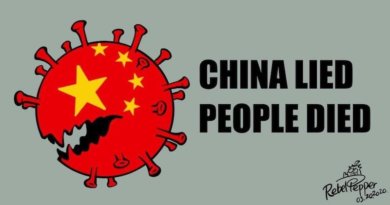China’s Electric Vehicle Dominance a Tibet’s Environmental Woes
By Tsering Choephel

DHARAMSALA, 2 Nov: The rush for “lithium,” dubbed as “white gold,” triggered by China’s booming electric vehicle (EV) industry, is centring on the Tibetan plateau for massive lithium extraction. This poses risks to Tibet’s fragile ecology and aggravates rights violations, according to a report published by Turquoise Roof, a portal for briefings on Tibet today – policy developments, insights, and stories published on Wednesday.
China supplies 80% of EV battery production worldwide, a dominance now threatened by increasing international derisking-policies embraced by the US and other countries, including two of China’s largest lithium sources—Australia and Canada.
Lithium deposits detected in remote areas of Kham and Amdo regions of Tibet using new remote sensing technologies are described as “sleeping in high mountains and deep valleys” by Chinese state media.
Declared the largest lithium deposit in Asia, China’s mining exploitation in Tibet’s mountains and valleys, which received little extraction efforts in past decades due to challenging terrains among other factors, is now set for concentrated exploitations.
The report cites concerning repercussions from lithium extraction in Tibet, a region known for its rich biodiversity encompassing subtropical, temperate, and alpine landscapes abundant in medicinal herbs. Tibet is also known as the ‘third pole,’ a global epicentre of climate change.
The report states that intensive energy processing, pollution, and waste generated from the lithium mining process would gravely affect the region’s ecosystem.
In 2013 and 2016, local Tibetans in Kham protested against lithium mining in the region, which had caused a sudden mass death of fish in the Lichu River. Their peaceful protest was suppressed by Chinese authorities.
The report highlights that “Tibetans who express any concern about the mines or protest peacefully are at risk of being killed, tortured, imprisoned, and the loss of their livelihoods,” pointing to the irony of the use of surveillance technologies powered by lithium batteries to silence Tibetans standing up for the protection of their environment.
US company Tesla and China’s BYD, the two largest EV manufacturers, find themselves increasingly reliant on Tibet as a source of lithium for their continuing expansion and production of EVs without consideration of negative environmental and social effects down the line.
In May, thousands of bids by Chinese investors reportedly registered for one slice of the Tibetan landscape, with initial price offerings being exceeded hundreds of times.
The report says that no development and production of electric cars is apparently possible without a hidden footprint in Tibet.
Lithium is largely used to make batteries, where lithium is used as electrode and electrolyte material in both disposable batteries and rechargeable batteries for mobile phones, laptops, digital cameras and electric vehicles.
According to some estimates, nearly 80 per cent of the raw lithium used in China is imported.
China’s exploration and extraction of minerals and rare metals in Tibet, especially in the Kham and Amdo areas, include lithium, vanadium, titanium, rare earth, and 28 other important mineral species, according to a report by rugor.org.
China’s thirst for minerals resources and its desire to exploit the rich deposits under the Tibetan plateau has led to numerous protests by the Tibetans who consider the hills and lakes sacred as they believe them to be the abode of gods who have protected the community and the land from time immemorial.
However, Chinese authorities have reacted to these protests by beating, arresting and also firing live ammunition at Tibetan protesters and the mining resulting in the spread of environmental pollution and anguish for local Tibetans whose ancestors lived here for thousands of years.
Besides mining, Tibet’s rivers are heavily explored for hydropower. About a dozen massive dams were built on the Dzachu River alone, with worrying consequences down the South-East-Asian Countries.






